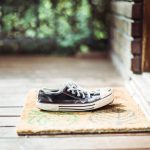When we asked readers to send their questions about coronavirus, a common theme emerged: Many people are fearful about tracking the virus into their homes on their clothes, their shoes, the mail and even the newspaper.
We reached out to infectious disease experts, aerosol scientists and microbiologists to answer reader questions about the risks of coming into contact with the virus during essential trips outside and from deliveries. While we still need to take precautions, their answers were reassuring.
Should I change my clothes and shower when I come home from the grocery store?
For most of us who are practicing social distancing and making only occasional trips to the grocery store or pharmacy, experts agree that it’s not necessary to change clothes or take a shower when you return home. You should, however, always wash your hands. While it’s true that a sneeze or cough from an infected person can propel viral droplets and smaller particles through the air, most of them will drop to the ground.
Studies show that some small viral particles could float in the air for about half an hour, but they don’t swarm like gnats and are unlikely to collide with your clothes. “A droplet that is small enough to float in air for a while also is unlikely to deposit on clothing because of aerodynamics,” said Linsey Marr, an aerosol scientist at Virginia Tech. “The droplets are small enough that they’ll move in the air around your body and clothing.”
Why is it that small droplets and viral particles don’t typically land on our clothing?
I asked Dr. Marr to explain further, since we’re all getting a mini lesson in aerodynamics.
“The best way to describe it is that they follow the streamlines, or air flow, around a person, because we move relatively slowly. It’s kind of like small insects and dust particles flowing in the streamlines around a car at slow speed but potentially slamming into the windshield if the car is going fast enough,” said Dr. Marr.
“Humans don’t usually move fast enough for this to happen,” Dr. Marr continued. “As we move, we push air out of the way, and most of the droplets and particles get pushed out of the way, too. Someone would have to spray large droplets through talking — a spit talker — coughing or sneezing for them to land on our clothes. The droplets have to be large enough that they don’t follow the streamlines.”





